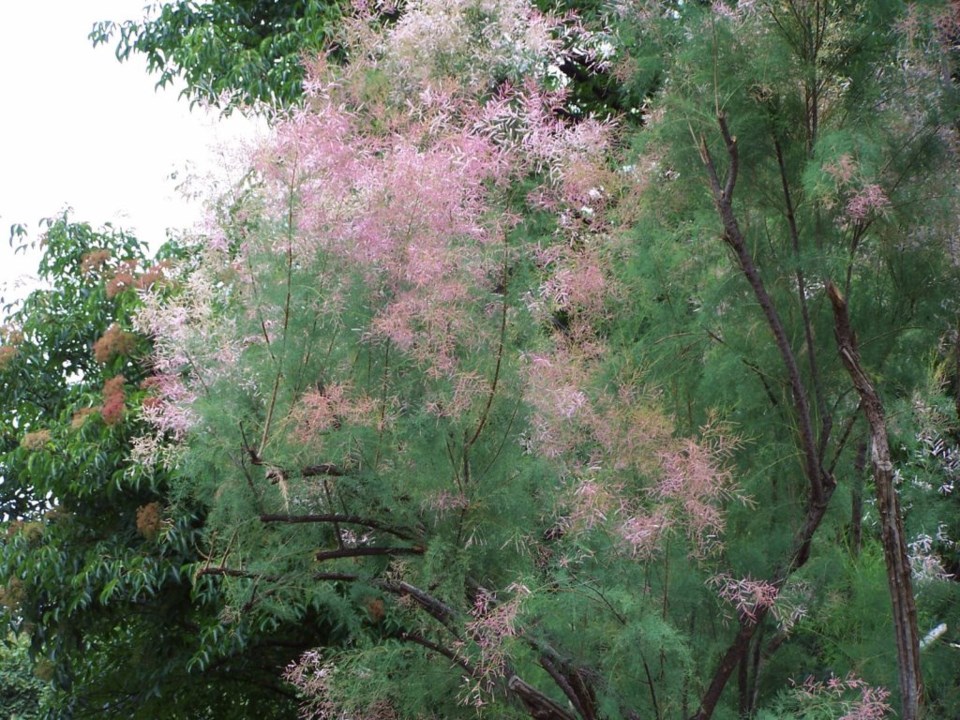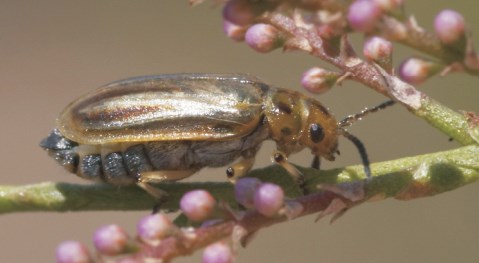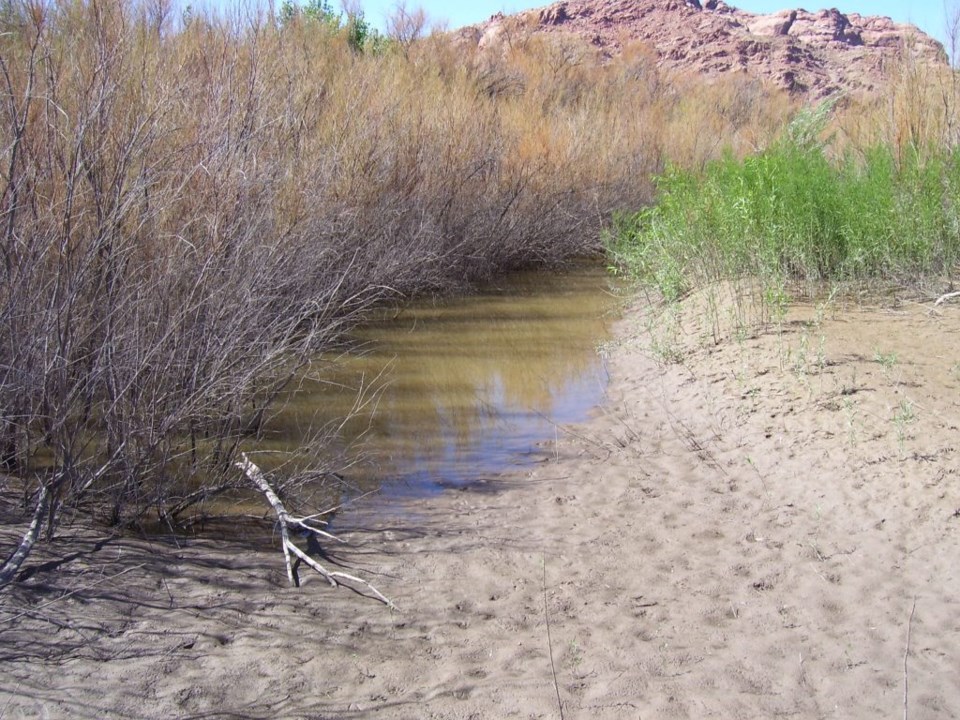This content was originally published by the Longmont Observer and is licensed under a Creative Commons license.
Finally back from a brief hiatus. Not sure why I thought taking two graduate-level classes during the summer when my kids were out of school was a good idea, but there you have it.
This week’s column is going to focus on a plant that is the subject of an ongoing war in Longmont, the tamarisk or saltcedar. The tamarisk is an invasive species of tree that has been introduced to North America. There are actually eight different species that have been introduced, but two species are more common than others.
Tamarisks were introduced sometime in the 1800s and were used for windbreaks and ornamental plants. They are native to central Asia, northern Africa, and southern Europe. In 1880, people started finding tamarisks outside the areas they were planted and by the turn of the century they were commonly found along rivers in Arizona and Texas.
Tamarisks can reach up to 20 feet in height in Colorado. The tree is deciduous in Colorado, meaning it loses its leaves every fall.
Tamarisks have small, scaly, bluish-green leaves that are only about 1/16th of an inch wide on very thin twigs with reddish-brown bark. The leaves of the tree overlap causing it to have an appearance like a cedar or juniper. In addition, the leaves are often encrusted in salt, hence the name saltcedar.
Tamarisks can tolerate extremely saline soil because they have special glands that release the salt, which is why the leaves have salt on them.
The tree begins to bloom in April and the flowers are white to pink in color. Flowers occur on spikes and are densely crowded on each spike. Each flower has five petals. The fruit and seeds of the tree are tiny and brown, barely noticeable. Tamarisks reproduce both by seeds and by spreading roots. Each tree can produce up to 600,000 seeds. Seeds remain viable for up to 45 days.

The various tamarisk species have been hybridizing with each other. Hybrids are hard to distinguish from each other and appear to be the most invasive of all. The tamarisk is a threat because it displaces native plants and forms impenetrable thickets. They have been known to spread up to 12 miles in one year.
The trees tend to occur near rivers (riparian habitats). They use water aggressively and so are able to outcompete with native vegetation. Tamarisks have a large taproot that enables them to use up to 20 gallons of water per day. Because the plant concentrates salt, when the leaves drop it can increase soil salinity. Tamarisk communities have lower biodiversity than communities of native vegetation.
There are several methods that are used to control tamarisks. One method is to have people go through an area and pull up the plants using a modified jack to get the taproot out. These people are known as “tammywhackers.” Agriculture departments may also cut the trees down and treat the stumps with herbicides. In places where tamarisks have established large communities, aerial spraying is sometimes used. For places that are hard to reach, the area can be flooded. This prevents the tamarisk from spreading too far and allows native plants to recover. The goal of control programs is not eradication, but control of the spread of the tree.

In the US, several species of leaf beetles, endemic to Eurasia, have established themselves and are useful for biological control of tamarisks. There is a lab near Palisade in Colorado that is breeding beetles for biological control of the tamarisk.
In 2005, the northern tamarisk beetle was released in western Colorado. Populations of the northern tamarisk beetle have been increasing since then and are even established in eastern Colorado. There have been continued releases of the beetles in areas where it has not established itself as well.
Tamarisk beetles defoliate the trees which leads to tree mortality. The beetle larvae feed in the tree canopy. Adult males use a pheromone to attract other beetles to the area. This leads to a large number of larvae and beetles concentrating in an area and laying eggs. It takes 28 days for the larvae to develop into adults. The adults spend the winter in the plant debris under tamarisks and usually emerge in April when the tree begins to leaf out.
Both the larvae and the adult beetles are capable of damaging foliage. They do this by scraping tissues off the leaves which results in the leaves drying out and turning brown. After two or three successive defoliations, the tree may die. In western Colorado, mortality rates range from 0% to 52% of the trees. Even if trees aren’t killed by the beetles, the reduction in foliage allows native plants to grow. Tamarisk beetles feed specifically on the tamarisk tree and will not harm native vegetation. The USDA tested the beetles on native vegetation extensively for at least ten years before the beetle was released. Beetles are free to Colorado residents and can be obtained by contacting the Tamarisk Biocontrol Program.



